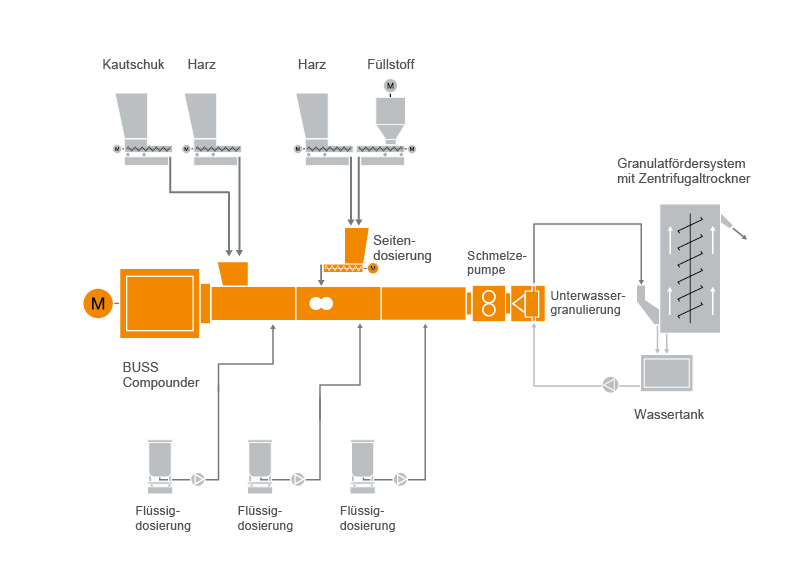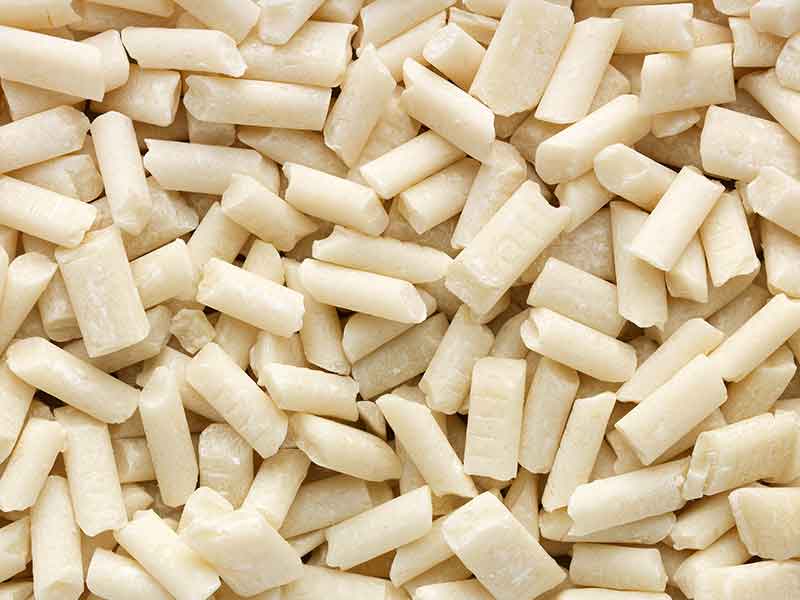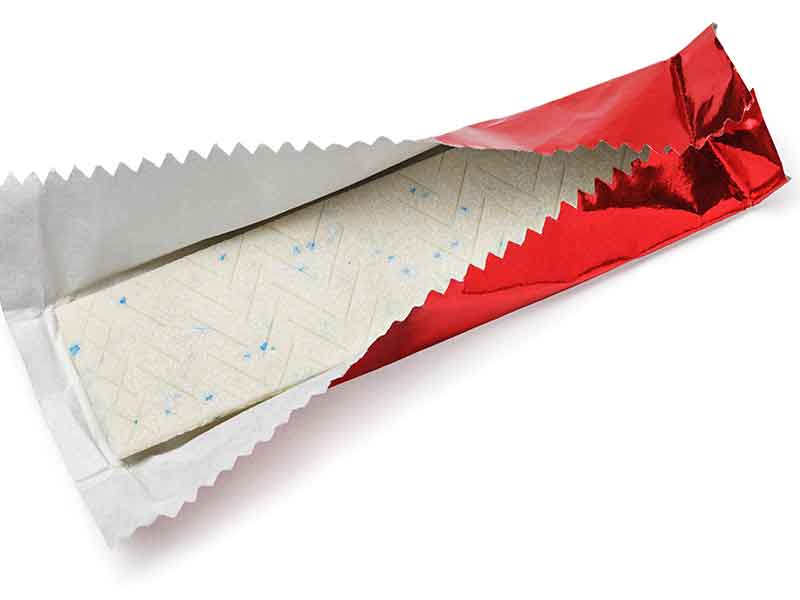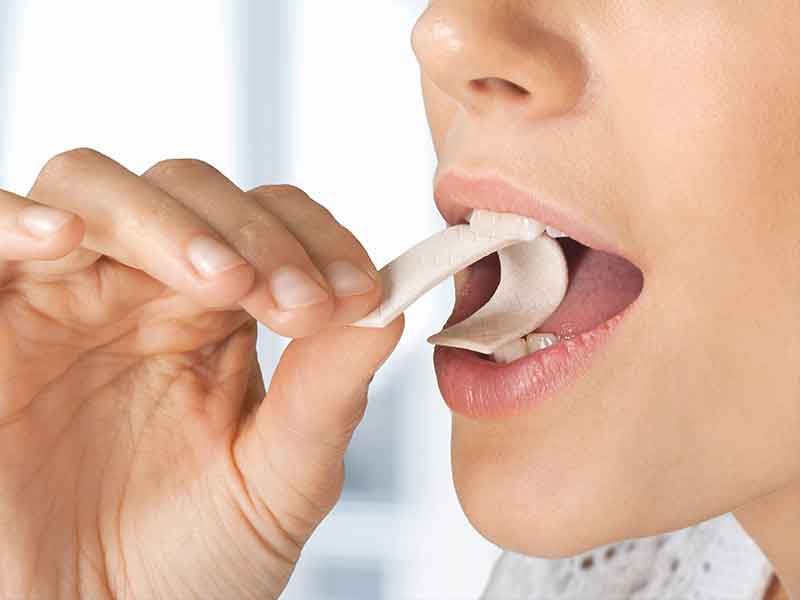Compounding technology forPolyisobutylene (PIB) as gumbase for chewing gum
Polyisobutylene (PIB) belongs to the olefin polymer family. It has been produced industrially since the 1930’s and is available in wide-ranging viscosities from oily to rubbery. The properties depend strongly on the mean molar mass. In addition to the technical applications described on the respective page, PIB is often used as an elastomeric formulation in the basic mass of chewing gum, the so-called gumbase. In contrast to the natural rubbers originally used, the individual requirement profiles of the variety, brand and manufacturer-specific characteristics can be very well met with the wide range of different PIB variants together with other recipe ingredients.
The potential of continuous processing of gumbase production was first recognized in the early 1980s, and has been increasingly used ever since. Among the main reasons are consistent, reproducible and uniform product quality, short residence times, careful handling of sensitive recipe components, precise and fully automated process control, reduced labour costs, low specific energies with resultant energy savings, and last but not least, the ability to reliably and mathematically model scale-up processes. BUSS compounding technology in the gumebase area is designed to meet these requirements.
Compounding requirements for PIB as Gumbase
For gumbase compounding, the recipe components have to be optimally mixed in the viscous phase. BUSS compounding technology is ideally suited for this purpose. In the first zone of the BUSS Kneader, the elastomers (PIB), as well as the rubber fractions, are present as liquids and they are melted or masticated via the dissipated shear energy of the kneader screw. In the second zone, fillers and resins are added and mixed. Synchronous dissipative and distributive mixing via the oscillating and rotating screw shaft are therefore particularly efficient in achieving these functions. The waxes, plasticizers and antioxidants are often present in liquid form and are fed to the process in the optimal position through hollow-drilled kneading bolts which can be positioned at many optional locations along the processing chamber. In the third zone, besides further homogenisation of the gumbase, rework material can also be incorporated. With a process length of only 11 L / D, unsurpassed product quality can be achieved, thanks to gentle compounding despite high throughputs. Due to the tight retention time spectrum and excellent self-cleaning properties, it is also possible to work with product changes on the fly, thereby optimizing availability and enhancing the economics of the process.
The resulting mass can now be further processed inline. For this purpose, it is usually pumped into a heated intermediate storage container. Alternatively, it can be made ready for further processing offline.

This can be achieved by granulating (e.g., hot-cut), pelletizing (e.g., rotoforming), or also the classical moulding of slabs from juxtaposed sausage shaped gumbase extrudates.
Thanks to its technologically outstanding features and highly efficient operating system, the BUSS Kneader became the reference compounding technology for gumbase compounding. Well aware of its capabilities, numerous customers worldwide have been using BUSS Kneader technology for decades.
Typical compounding plant layout for PIB as gumbase

BUSS compounding systems offer the following specific benefits
Learn More
Downloads
-
COMPEO
-
BUSS Kneader Technology for the Food Industry







